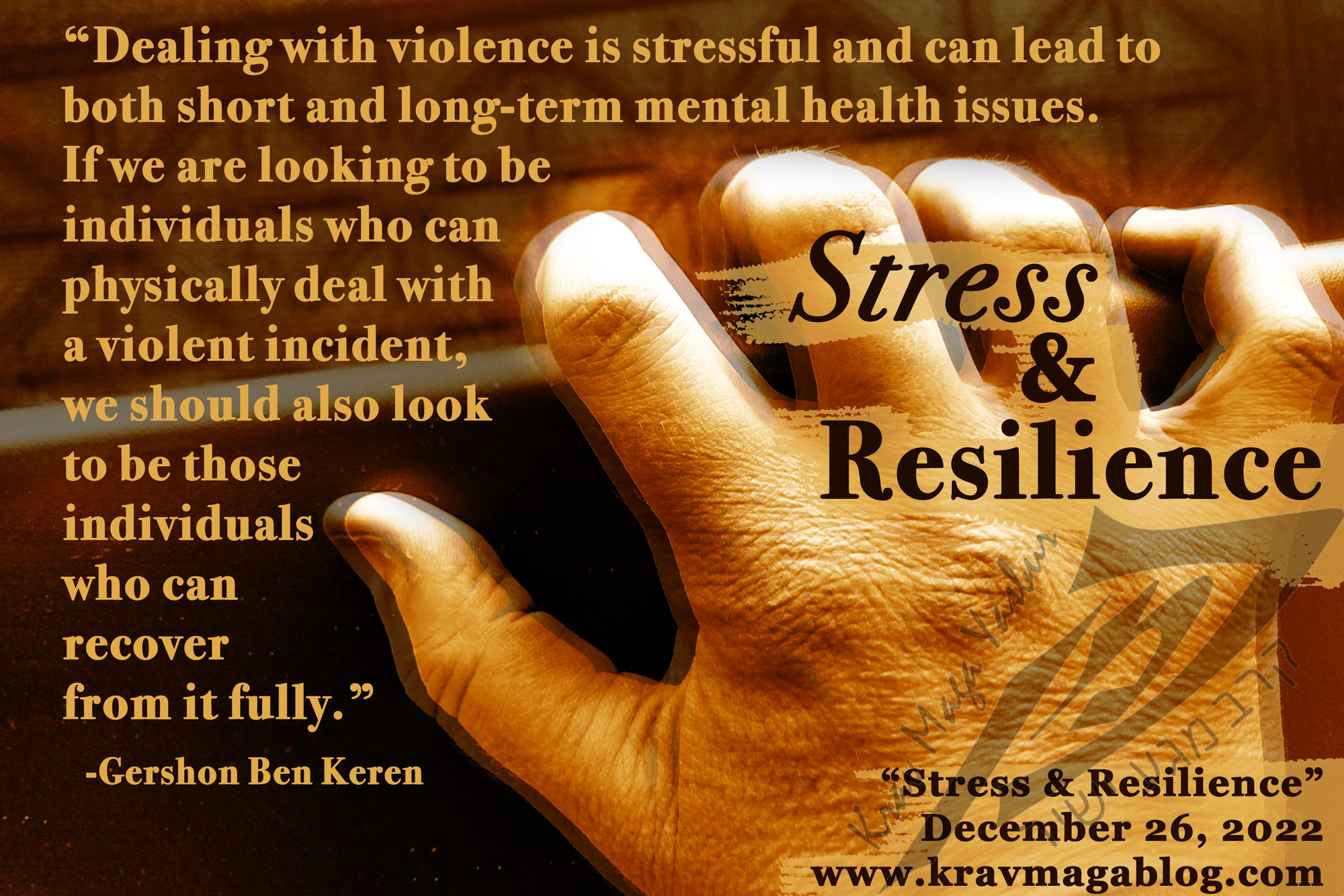Why Would Somebody Attack You With A Knife?, is an article written by Gershon Ben Keren, a 5th Degree Black Belt in Krav Maga, who teaches Krav Maga in Boston, MA. He has also authored three Amazon best-Selling Books on Krav Maga.
Why would somebody attack you with a knife? An attack is very different to a threat, in that the person attacking you wants to cause you harm, rather than get you to acquiesce to a demand, such as handing over your wallet, etc. So why would somebody want to stab or slash you? Most of the time, when practicing defenses against knife attacks, we don’t consider or think about the attacker’s motive, we just practice the technique(s) – because if we were to be attacked, the assailant’s motive wouldn’t be relevant, we’d just be forced to defend ourselves. In the moment, I agree that understanding motive isn’t the most important concern; blocking the knife and nullifying the attacker/attack jump to the top of the queue. However, when we train knife attacks, we should think about the motive of the attacker, because it may give us a better understanding of how real-life attacks occur, the context of such attacks, and whether the training scenarios we create and/or drill are realistic.
If somebody decides to attack you with a knife, there must be a reason. It doesn’t have to be a good reason, but there has to be one. If you look at the people in your life: friends, family members, associates, work colleagues, people you know, etc., do anyone of them have a reason to attack – not threaten, but attack - you with a knife? If you are an adult, interacting with other adults, the answer is probably no. Most of us are not engaged in serious or important enough disputes, either in real-life or on social media, that someone would think about attacking us with a knife - this doesn’t mean that it’s not possible, or doesn’t/won’t happen, just that it’s a big step for someone to take. Most people have too much to lose and not enough to gain, from engaging in such acts of extreme violence. A teenager’s reality may be different to this, and they may be at risk from peers who do feel slighted and disrespected by things that are said, and written about them, and feel justified to cause harm with a knife, etc., but once the ego of youth is left behind, most of us understand the seriousness of attacking somebody with a blade. So in what situations might you face a knife attack?
There are several scenarios in which you may end up dealing with a knife attack. One obvious one would be when you get in to a disagreement/argument with somebody, who ends up pulling a knife at some point during the confrontation; it might be at the beginning, but it could also be in the “middle” of the fight. In either case, the knife has to be drawn, the fight doesn’t start with it out. This is why training to spoil a draw from a multitude of positions should be a key part of our training. We should also train against an assailant who is attempting to intimidate us with the knife, rather than simply attack us e.g. there are those individuals who carry a knife because they are scared of confrontations, but have the type of ego that gets them involved in them – these individuals will often show/display a knife in the hope of getting the person they are dealing with to back-off, not realizing that once drawn, their ego will not let them put it away, without using it. This is why scenario-based training is so important, as it allows us to recreate these social interactions, so that we have the proper contexts for our training e.g. students can practice having an argument, where a knife gets drawn at some point. Unfortunately, most training involving knives focuses on the knife being out and on the attack – often with good distance between the attacker and their target. If you drill from the position of two individuals arguing/talking, you will get to train at the correct range and distance for these types of assault.
The individual pulling the knife at the beginning of the fight to intimidate you may not have a motive to kill you, however that may change as the fight progresses. They may have initially drawn to intimidate you and dissuade you from getting physical with them, and then made a few slashes to try to cut/injure you, but as you keep defending yourself, and attacking them back, they start to realize the pressure they are under, and their own survival instinct takes over. They will move to an emotional place, and start to make stabbing actions – this is when they have emotionally crossed over into kill mode, and they have one goal, which is to put you out of commission. This is one way, in which somebody who only ever thought about using their knife for “self-defense”, ends up using it to kill someone.
Knife attacks are also committed by predatory individuals, usually in pairs or groups, who are actively, or tacitly looking for victims, so that they can feel good about themselves – and gain some respect from each other. Often, their attacks are used to display to the others in the group, that they are tough and not to be messed with. These attacks may be preceded by some form of dialogue, or they may be conducted more as an ambush, with the initial assailant moving in close to the target/victim, before grabbing, and repeatedly stabbing them. They may decide not to approach their target head-on, where eye-contact could be made, and their victim could engage them in dialogue, but instead approach or sidle up, at an oblique angle, which makes it difficult for the target to identify if the attacker’s movement is related to their own. In any case, they will probably try to control them with their non-weapon hand, either grabbing the head to pull them in, pushing and pulling them with a lapel grab, or driving them back with the forearm against the throat, etc. However they try to control/latch-on to their victim, they will be trying to move them and disrupt their balance – this may mean that the only initial defense that can be made is to block/defend yourself, as you try to get stable (there are many ways to do this – but until you do, striking and/or getting control of the weapon arm will be largely ineffective). Knife attacks are dynamic, frenzied affairs that involve movement, and will often see you taken by surprise; this is why it is so important to understand and be able to identify the pre-violence indicators so that you can exit a situation – or at worst, prepare for it – before the initial attack is made. A big question though, is how often do we train knife against multiple assailants?
Situations can change. What started out as a simple mugging scenario, where a knife was used to threaten and force a target to hand over their possessions, can change to an attack when they refuse, or if they try to resist. A mugger with a knife is not simply going to walk away, if you resist or refuse to hand over your wallet – they will use their weapon against you, it’s as simple as that. This is why it’s always best to comply with a demand for resources. If, after complying, the mugger hasn’t walked away, they’re no longer behaving like a mugger, and you are dealing with a different motive. This is where you need to go on the offensive and defend yourself. It is worth noting that anytime you attempt a physical solution to a knife threat, you have immediately elevated the situation to a knife attack, as the mugger will now be forced to use the knife to “defend” themselves with.
Knife attacks don’t just happen in a vacuum, they happen in a variety of situations, with different situational components. If we only train against an attacker who shows you a weapon, and comes at you from distance, we’re not training for reality. We need to think about “why” somebody would attack us, and because of this “why”, what their attack would actually look like.
0 COMMENTS














